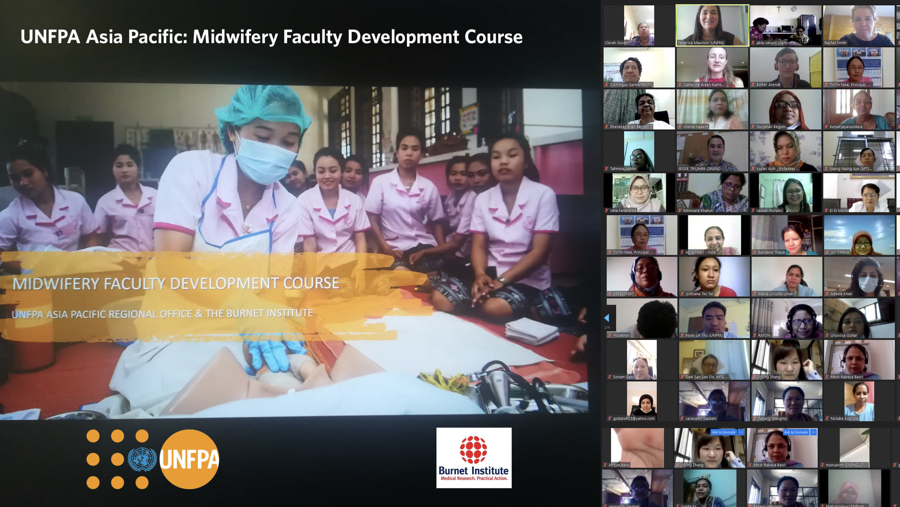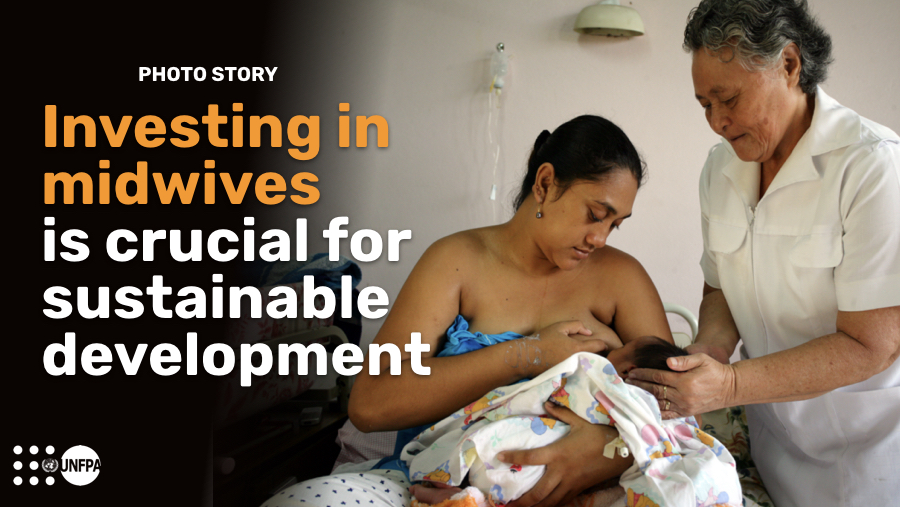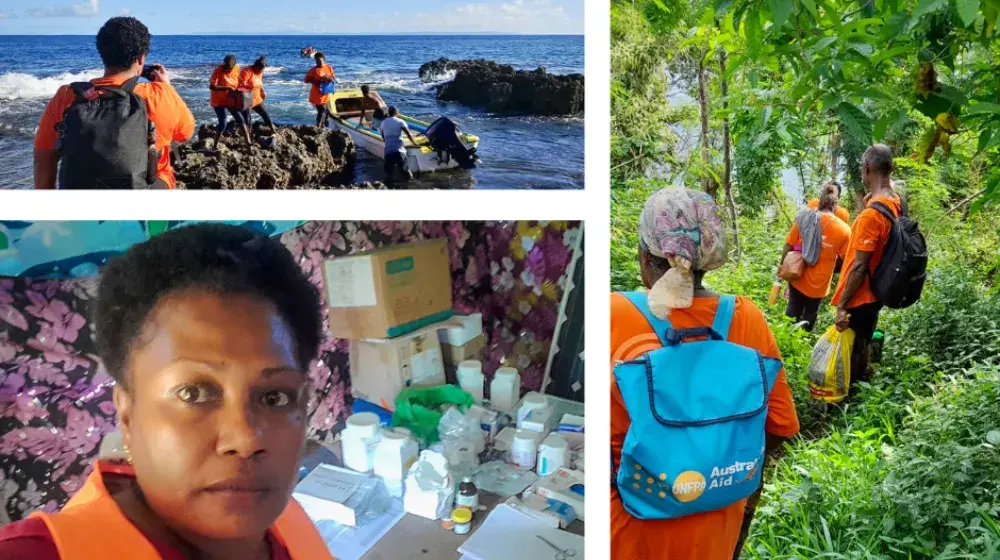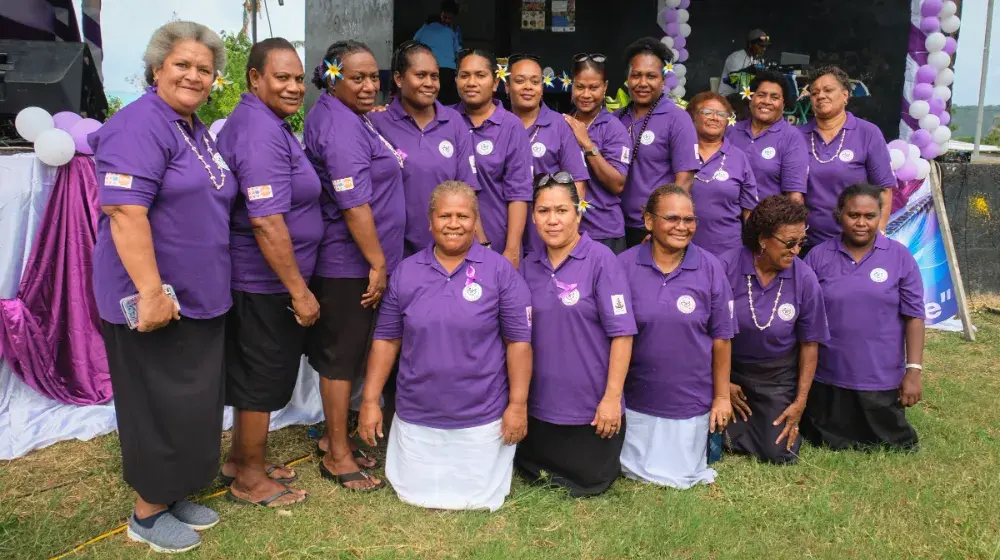Profile: Rachel Smith from the Burnet Institute
“Without quality education you are not going to have quality midwifery care”
The 2021 State of the World's Midwifery report called for an investment in midwifery education and in particular, building faculty capacity to deliver quality midwifery education. The WHO, UNFPA, ICM strategic framework calls for an investment in midwifery and in midwifery education and focus on faculty. During the pandemic, UNFPA APRO partnered with the Burnet Institute to continue efforts to support Midwifery educators and Faculty remotely. In our Asia Pacific region, midwifery is a relatively new profession and thus we need to support new faculties to develop confidence and competence to deliver midwifery education programs. Rachel Smith and the team from the Burnet Institute worked with UNFPA APRO to develop and deliver a program of midwifery faculty development that has increased the number of skilled educators across the region.
“There is a broad recognition that without developing faculty who teach the programs, then you are not going to have quality education, and without quality education you are not going to have quality midwifery care,” Rachel says.
The Lancet midwifery series in 2014 looked at the impact of midwives and demonstrated how more than 50 outcomes could be improved if midwives are educated and regulated to global standards. “That is the key in terms of trying to improve or trying to prevent morbidity, mortality, unnecessary or harmful interventions,” she says. “Midwives can support health promotion and disease prevention activities like breastfeeding or vaccinations and reduce the load on the economy and save money. Midwives support natural births through less interventions and shorter lengths of stays, which in turn reduce morbidity and mortality.”
This synergy of ambitions and outcomes was the impetus for the faculty development program. UNFPA APRO and the Burnet Institute wanted to support countries to develop their midwifery faculty, as some countries in the region do not have adequate professional development systems.
Rachel and the Team at Burnet, planned and facilitated a faculty development program which looked at approaches to curriculum development including, learning design, curriculum review, development of learning modules and creating authentic assessments designed to support participants of the program to implement contemporary approaches and teaching in their practice.
“We pivoted and adapted what was going to be a 10-day face-to-face event to modules
in an online program.”
The UNFPA and Burnet collaboration developed the six module faculty development program in 2019 and the plan was to deliver it as an intensive two-week training Bangkok that would bring a handful of key educators or faculty from different countries. “The pandemic emerged and ceased all travel,” Rachel recalls. “We pivoted and adapted what was going to be a 10-day face-to-face event to modules in an online program.” Sixteen of UNFPA’s country offices in the Asia Pacific region reached out to midwifery faculties in their respective countries and helped mobilise and subsequently support this professional development opportunity.
The first module rolled out in June 2020 using a blended learning approach. “There was a weekly Zoom for regular catchup meetings,” she says. “We used the Moodle learning management platform for a repository for module resources and each unit within the module had its own pre-recorded presentation for participants to access.”
The modules had a workbook that provided activities to complement the online sessions and these learning resources were available on Moodle. The first module was delivered to 99 educators across 16 countries in the Asia Pacific region.

“By the second module in the program, we had almost doubled the number,” she says. “We had 200 midwife educators, some of them nurse educators.
Participants could submit their workbook online through Moodle or paper-based to overcome some of the challenges with internet connectivity and limited access to technology. Weekly sessions kept everyone involved so there were not lengthy periods of time between contact. Each module had about four or five online sessions.
Some countries opted to modify the program materials and begin training trainers. “In the Philippines they adapted all the resources,” she says. “They have rolled it out to others across their networks. With someone leading the process it is possible to utilize all the resources developed and rerun the program.”
The regional faculty development program was able to maintain participants' engagement and has a 65 % completion rate which is considered high for an online program.
"The partipcants were joining in from their phones, from office spaces, from hospitals, from shared spaces, from their cars
on the way to somewhere else."
“The participants were just amazing,” Rachel says. “They were so eager: they turned out every session despite great difficulties and from some areas with unreliable internet access. They were joining in from their phones, from office spaces, from hospitals, from shared spaces, from their cars on the way to somewhere else. They attended regularly, participated and completed all module requirements.”
Rachel recalls how she received an email from one of the participants in Afghanistan just after the fall of Kabul. The email read: “You will have seen, there has been some difficulties in Afghanistan. I have had trouble concentrating on my studies, but please if possible can I have a two-week extension to finish the requirements of the module and complete the program?”
“And that really hit home to me about how all sorts of disruptions can happen where the participants were, but how important this program was to them,” Rachel says. “They have little access to continuing professional development and they were so committed despite all that had been going on during the time of the program.”
Rachel says that even with the coup in Myanmar, participants attended despite the civil unrest around them. “We had natural disasters and other emergencies and crises, but the participants kept turning up every time.”
Rachel says the educators liked the ability to network with counterparts from across the region. “I would present a small session, then we would enter smaller breakout rooms to discuss and share ideas and experiences and develop learning resources together.”
“We had natural disasters and other emergencies and crises, but the participants
kept turning up every time.”
Rachel used different strategies to build a community of practice. “Our aim was to provide this professional development but also build a community of practice where they can share experiences and ideas.”
She says consistency was a key to the success of the course. “The sessions were regular, at the same time, the same place, every week or fortnight.”
Rachel set up a closed Facebook group to encourage discussions and pose questions. “Everyone would share resources and ideas online through that Facebook group,” Rachel says. “In some countries they developed their own network using WhatsApp groups to stay connected with each other throughout the course of the program.”

Rachel was the primary facilitator for the length of the course. “Every fortnight there was not a session that I missed attending,” she says. “You develop a relationship with the participants.”
She says the fact that the course was online meant that more people could attend. “We set out to deliver the program face-to-face over 10 days to about 20 or 25 people,” she recalls. “By switching it online and running the way that we did, it meant that more than 200 participants could undertake the program.”
“Our aim was to provide this professional development but also build a community of practice where they can share experiences and ideas.”
The program reaches exponentially more people than it would have pre-pandemic. “If you had told me that I would deliver a faculty development program with six modules to 200, people across 20 countries in the region, with 20 different languages. but in one common language, I would have said, ‘Impossible. We will not be able to do that.’ But somehow, it just worked.”
Learn more
https://asiapacific.unfpa.org/en/publications/policy-brief-quality-midw…
https://internationalmidwives.org/our-work/policy-and-practice/global-s…
https://www.thelancet.com/series/midwifery
https://burnet.edu.au/news/1387_virtual_course_improves_midwifery_educa…






